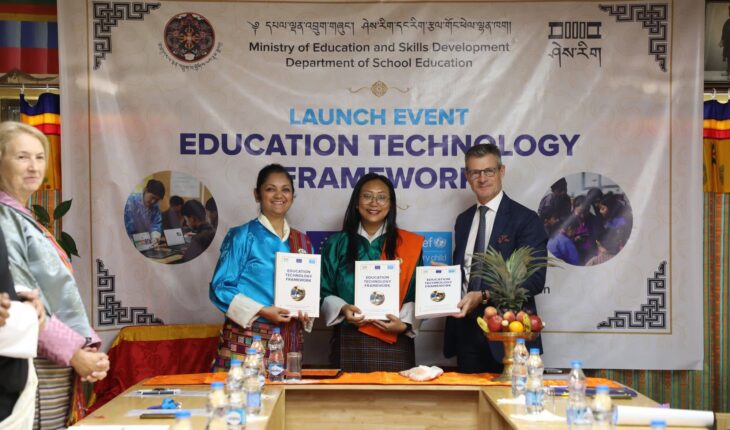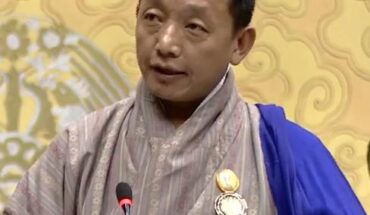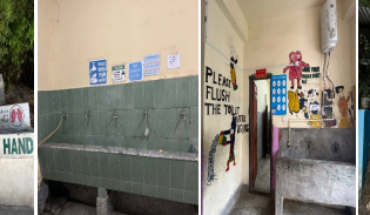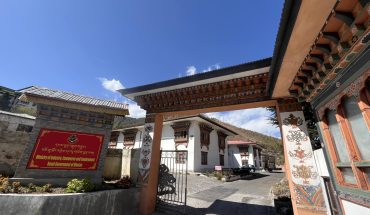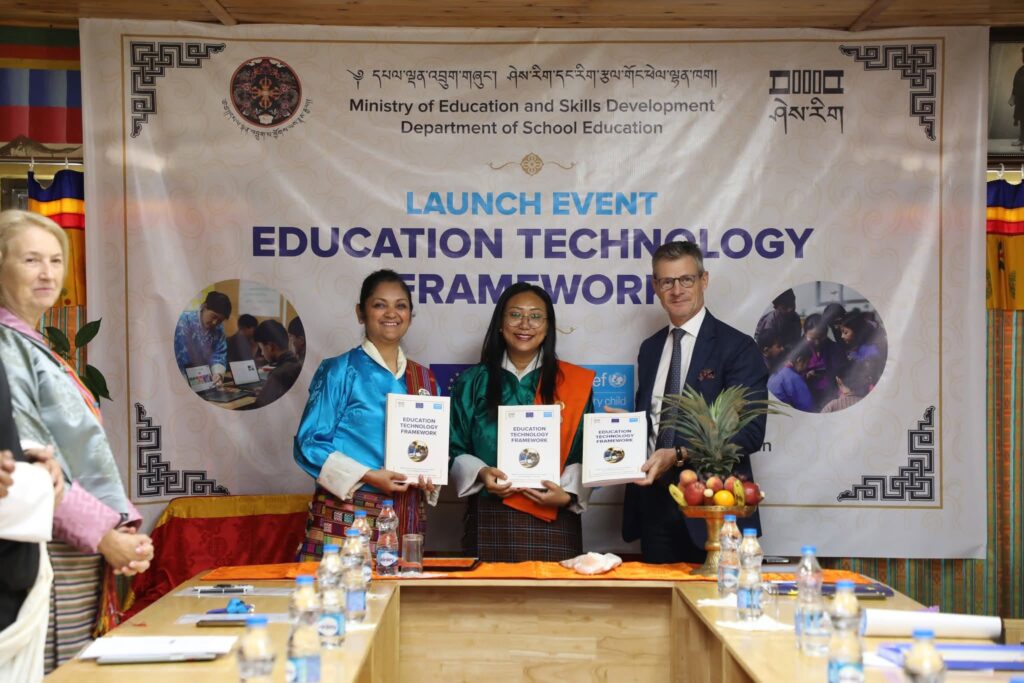
NGAWANG JAMPHEL
Thimphu
Bhutan has taken a major step forward in modernizing its education system with the launch of the Education Technology Framework (ETF).
This new framework, jointly developed by the Ministry of Education and Skills Development (MoESD), the European Union (EU), and UNICEF, is part of the Digitalisation in Education initiative.
Funded by the EU with a grant of €1 million, the initiative aims to bring technology into classrooms across the country and improve how children learn.
It will provide schools with digital tools, online content, better internet access, and teacher training to make learning more effective and inclusive.
The ETF is designed to transform teaching and learning from early childhood to higher secondary levels. It will guide how technology is used in classrooms to help both students and teachers gain the digital skills they need for the modern world.
This initiative responds to His Majesty The King’s Royal Decree of 2020, which called for an urgent reform in Bhutan’s education system to prepare youth for a fast-changing global environment.
It also aligns with the priorities of Bhutan’s 13th Five-Year Plan, which focuses on strengthening digital infrastructure, improving digital literacy, and encouraging innovation in education.
During the launch, Education Minister Yeezang De Thapa said the ETF represents a new era for Bhutanese education. She emphasized that the framework is a strategic step toward creating a nationally rooted, inclusive, and equitable digital education system.
The goal is to ensure that every child, regardless of their background or where they live, has the opportunity to succeed in a technology-driven world.
The ETF is not a single document but consists of eight inter-related policy and standards documents meant for policymakers, school leaders, teachers, and students.
These documents will guide schools on how to use technology effectively in teaching and learning.
Under this initiative, 10 pilot schools will be selected where around 6,000 students and 400 teachers will benefit directly. These schools will receive better digital tools and training, helping students gain essential digital and technical skills.
EU Ambassador to Bhutan, Hervé Delphin, said the project is part of the EU’s broader support for Bhutan’s efforts to modernise its education system.
He said the EU-Bhutan partnership will continue to focus on developing human capital and empowering young people with the skills they need to face the future.
One of the main challenges the ETF aims to address is the digital divide—the gap in access to technology between urban and rural areas. Many rural schools still lack reliable internet and digital tools.
The framework provides practical steps that schools can take to start using technology right away, even with limited resources.
It aims to help Bhutan move from the current “Emerging” and “Applying” stages of ICT use in education to an “Infusing” stage, where technology becomes a natural part of all teaching and learning processes.
UNICEF Bhutan Representative Rushnan Murtaza said the ETF is not just a policy paper but a commitment to Bhutan’s children and their future.
She said every learner, no matter where they are, should have access to the digital skills needed in the 21st century.
The framework focuses on several important areas. These include improving digital literacy for teachers, ECCD facilitators, and students; creating relevant and easy-to-use digital learning content; promoting personalised and competency-based learning; and ensuring online safety and cybersecurity.
These areas are seen as critical for helping students not only learn better but also learn safely in a digital environment.
Now that the ETF has been launched, the next step is to begin putting it into action.
The MoESD will develop a training package for teachers based on the ETF’s digital literacy standards. These training programs will help teachers gain the skills needed to use digital tools effectively in their classrooms.
All activities related to the digital transformation of education, at both national and Dzongkhag levels, will now follow the ETF. This alignment will ensure that the integration of technology in education happens in a planned and efficient manner across the country.
With support from the European Union and UNICEF, Bhutan is moving towards a more inclusive and technology-friendly education system that will benefit not just the present generation of students, but many more to come.
With regard to the content, there are two significant perspectives on digital content; that which is locally teacher-created, and that which is nationally-developed.
Teacher-created content is developed by teachers, on their own, to meet the immediate and specific needs of their classroom. Teachers typically use basic tools like PowerPoint or Google Forms that don’t require advanced technical or design skills.
Content is usually customised to the learning objectives, pace, and interests of their students, such as slide presentations, quizzes, or worksheets.
Nationally-developed (also known as centre-led) content is far more sophisticated, incorporating elements like interactive multimedia, rigorous pedagogical principles, and compliance with legal and ethical standards like data privacy, content security, and inclusion.
It is designed for broad use to ensure consistency in education, must cater to diverse learning needs and environments, and is often intended for both independent student use and integration into teacher-led lessons.
The creation of this content involves teams of specialists, including instructional designers, subject matter experts, graphic designers, and accessibility professionals.
It undergoes thorough review, testing, and updates to ensure alignment with national educational goals. In essence, teacher-created content is highly adaptable but limited to local needs and tools, while nationally developed content is standardised, scalable, quality assured and built for longevity and inclusivity, much like published textbooks.
Another important step is the establishing a National Centre of Excellence for Digital Education within an appropriately resourced national university would be a critical step in driving sustained educational transformation.
Such a centre is expected to serve as a hub for research, innovation, and capacity building in the field of EdTech, addressing both immediate challenges and long-term opportunities for advancing digital learning across the country.

